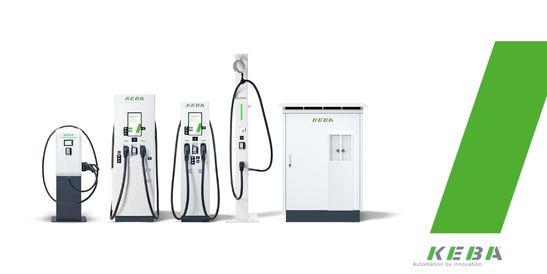Load management - importance and benefits
- Knowledge
- Charging
- Technical
- Business
- 14.12.2021
- Reading Time: {{readingTime}} min

Contents

How much charging power is needed when there are many e-cars?
A electric vehicle generally charges at a 3-phase wallbox with up to 11 kW, if the driver hasn’t reduced the charge limit manually. So, if one e-car requires 11 kW charging power, two require 22 kW, and 50 require 550 kW. Add to these consumers in the garage or carport the energy consumption in the apartments. Which is about the same as that of the e-cars. This would amount to quite a lot, and electric vehicles would more or less double the re-quired charging power in existing real estate. But as the subjunctive mood suggests, the calculated figures are only theoretical.
Diversity factor
Things look different in practice. All cars will never be charging at the same time at full ca-pacity, much like all fifty apartments will never have the stove, oven, washing machine, etc. running at the same time. That’s why the so-called diversity factor is used to calculate the real sufficient dimensioning. It is based on the empirical values of the network operators in combination with a security margin, so that statistical peaks are definitely covered. This is a practical solution that is applied in all areas of life in order to use resources efficiently: A town’s water supply is designed in such a way that many people can run a bath at the same time, but never all of them. Similarly, a hospital has enough beds for a fraction of the popu-lation, and not every employee in a company has her or his own printer.
In the example of fifty e-cars with 11 kW charging power, the diversity factor is about .28. The total of 550 kW thus results in just under 155 kW of required input.
Load management – what does it mean?
The charging infrastructure of a building with many wallboxes certainly requires supervision, because as few as twenty e-cars simultaneously charging at maximum speed would cause the power requirements to skyrocket. To avoid overloading the building’s electrical system, a control unit decides how much power can be provided for charging. This distribution be-tween consumers in the building and vehicles is called load management.
Static load management
We can distinguish between static and dynamic load management. In static load management, the charging stations are simply assigned a fixed upper limit. They won’t get more, no matter how many cars are plugged in. The maximum power is equally distributed among all plugged-in cars. This is to make sure that the domestic connection is never overloaded, but never maxed out either.
Dynamic load management
In dynamic load management, the charging station’s control unit communicates with the building’s energy meter. It thus reacts in real time to the energy requirements in the apartments—which always take precedence—and allots the disposable power to the plugged-in vehicles. Such intelligent load management allows you to further reduce the dimension of the connected load in new buildings and to make better use of the existing connected load. This smart design makes use of the typical daily routine of the tenants: If more stovetops, ovens, dishwashers, or hairdryers are used in the early evening, less power can be used during that time to charge electric cars. However, this does not affect the usability of the electric cars – after all, most vehicles have just been parked in the garage. As the energy demand in the apartments drops at night, the electric cars can use more power and are sufficiently charged in the morning. Power peaks are thus avoided.
To the left, the power consumption of a residential building with 50 BEVs during the day without load management. To the right, the same with smart time-of-use load management. The required power input can thus be reduced to about a third.
It works: The urcharge project proves it
KEBA Energy Automation has launched the project Urcharge (Urban + Charge) in cooperation with the energy provider Linz AG, the housing association Neue Heimat, the Vienna Univer-sity of Technology, and the environmental management agency ETA. In a six-month experi-ment, we proved that it is possible to keep fifty e-cars and one hundred charging stations in a large residential building in constant use without increasing the power input. The most important findings of Urcharge were that power could be supplied to the house’s electrical system at all times and that the tenants did not notice the load management’s interventions when using their e-cars.









